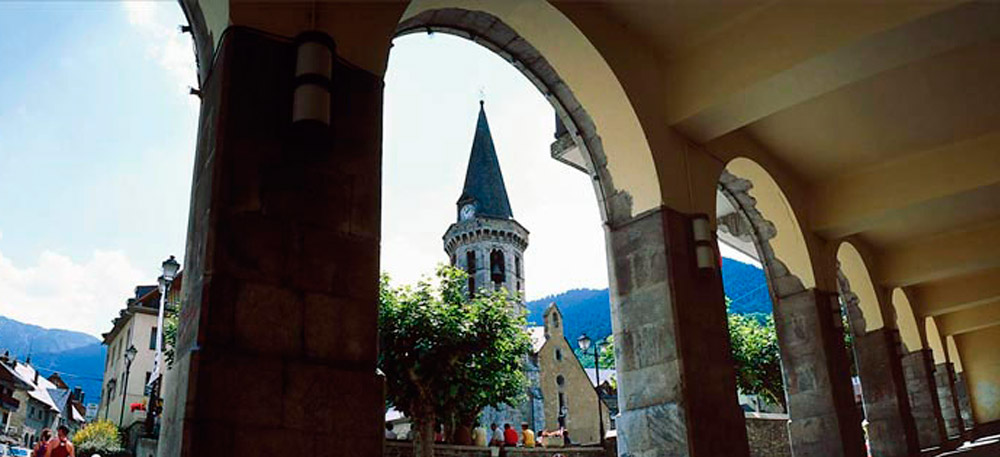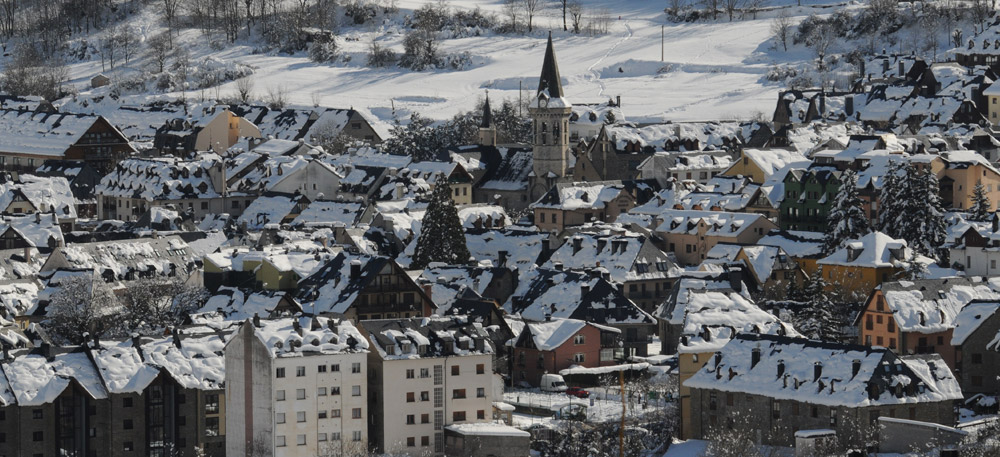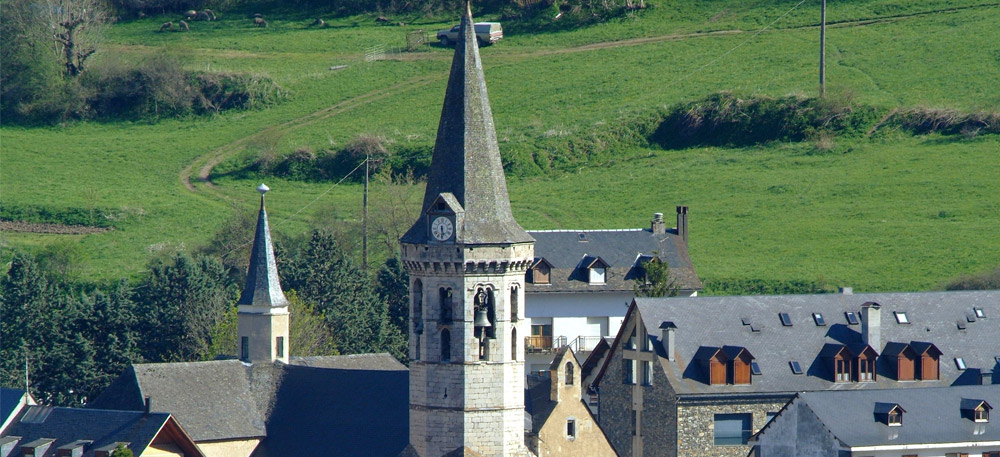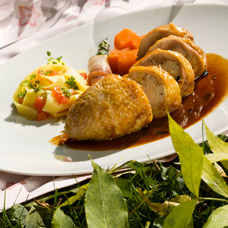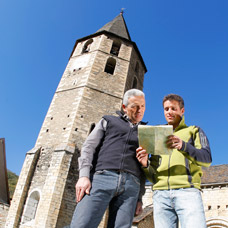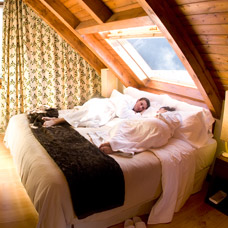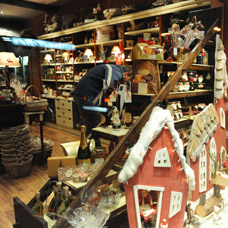Vielha, the capital of Val d’Aran, is a small Pyrenean city with approximately 4000 inhabitants and it is located at 974 meters above sea level. It is surrounded by peaks over 2000 meters. The village is built along the Garona River, at the point where both the Garona and Nere rivers meet.
Its streets and new buildings have formed an interesting commercial nucleus where the visitor can find all types of businesses specialized in all kind of sports (adventure, high mountain and snow), arts and craft of Val d’Aran and the Pyrenees, basic necessity items and services, clothing stores, outlets, supermarkets, banks, the hospital and the sports club, Palai de Gèu. The wider avenues contrast with the narrow streets and old houses of the old quarters where there is a varied selection of restaurants and bars.
The Sant Miquèu church is dedicated to this saint, who was also a prince. It is in the center of Vielha next to the arcades of the Town Hall, the Tourist Office and the Post Office. Inside the church the valuable Christ of Mijaran is conserved. It is believed that this wooden bust of Christ was part of the scene of the Descent from the Cross, that would have been destroyed and only this portion remains. It dates back to the 12th century and was made by one of the masters of the Erill Workshop, who developed the Romanesque Lombard style in the nearby valley, Vall de Boí. The Gothic and Baroque paintings within the church are other treasures the visitors should not miss. The exterior of the church is noteworthy given its impressive octogonal bell tower and slender belfry with slate shingles, so typical of Val d’Aran.
Vielha has other places that the visitor must not miss: the Ethnological Museum, the stately home Çò de Rodès and the Wool Factory. The tower of general Martinón (where the Ethnological Museum is nowadays located) is a house from the 17th century with interesting Renaissance windows; here, the visitor will discover the fascinating history of Val d’Aran. Çò de Rodès is another stately home located in C/Major as well, next to the Museum and has been recently well restored. Further up in this street, there is another historic building and museum: the Wool Factory, where the visitor can see the so-called power loom ‘Müle Jenny’. This machine was key to the weaving workshops during the Industrial Revolution and shows how important this industry was in Val d’Aran throughout the 19th century.
Some beautiful walking itineraries start in Vielha. Thanks to its central location, Vielha is the natural crossing of different roads, such as the N-230 and the C-28. The N-230 crosses the tunnel of Vielha towards France in the north and towards Ribagorza and Lleida in the south. The C-28 goes up to Baqueira and crosses the Bonaigua mountain pass towards Pallars. Camin Reiau (a long walk path) will take us on foot to Naut Aran in one direction or to Mijaran and Baish Aran in the other. When leaving Vielha towards France, we will find the remains of the Mijaran Sanctuary with the new building next to it. Here the “Conselhers” or local government representatives and the Sindic (its president) take possession of their duties in the Conselh Generau just as they did in the 13th century.









